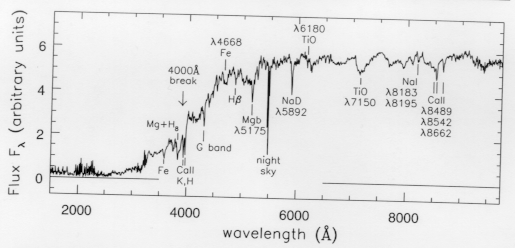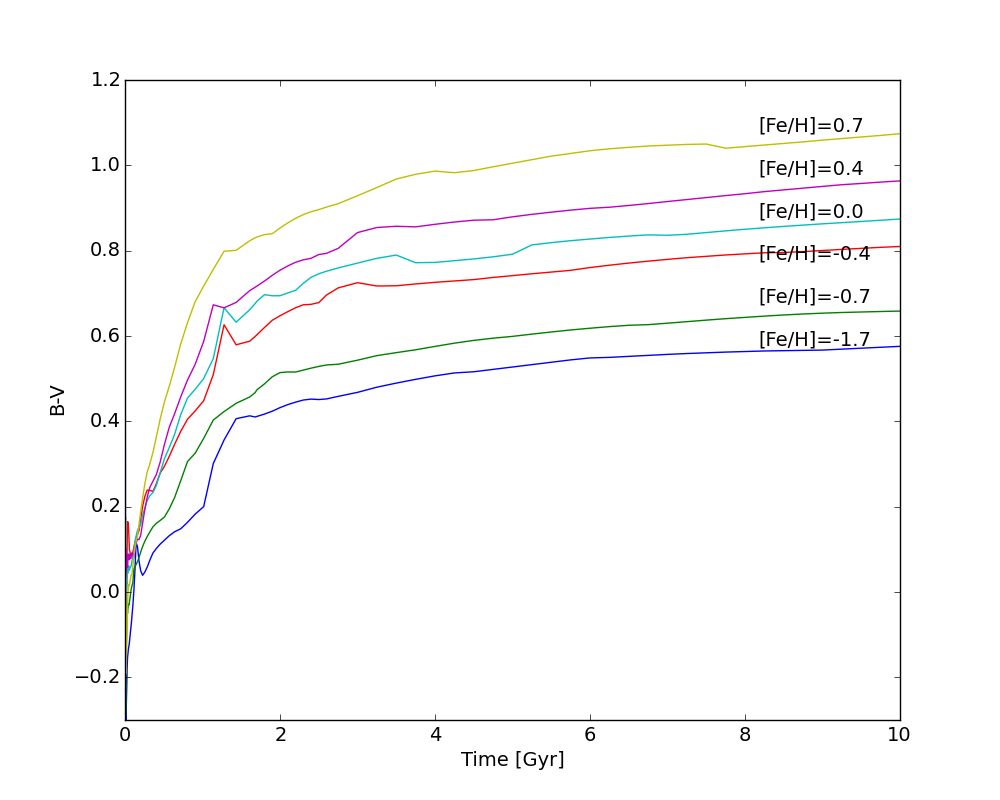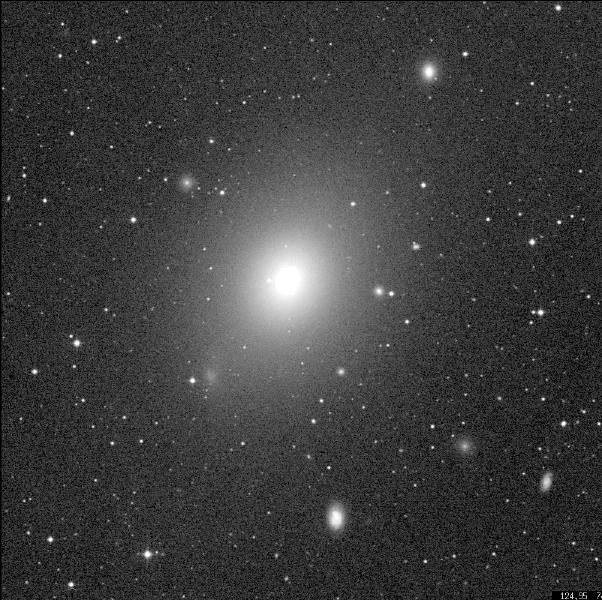
Here's a spectrum of an elliptical galaxy. What do we notice?

Conventional thinking (as of 10 years ago or so): Elliptical galaxies are old, single-burst population galaxies.
Stellar population synthesis tracks: B-V color vs age, for a "single burst" population of evolving stars of different metallicities:

So two things make a stellar population red: old age, and high metallicity. The colors of a galaxy cannot distinguish between the two.
Review question: why would high metallicity
make
stars redder?
Elliptical galaxies (like spirals) show a color-luminosity
relationship: brighter galaxies
are
redder. This is well-established to be a metallicity effect,
not age. So brighter galaxies are more metal-rich.

Also, ellipticals are not devoid of gas. But it's not neutral hydrogen, or molecular hydrogen. Where is it?
Look at the elliptical galaxy M49 in optical and X-ray:


(Thanks to Beth Brown, University of Michigan)
There is extended, X-ray emitting gas. How hot would it have to be to emit X-rays? Set the energy of an X-ray photon equal to the thermal energy of particles:
Solving for T, we get a temperature of ~ 106 K or so.
Mass estimates range from 108 to maybe as much as 109 Msun of hot gas in ellipticals.
Questions: